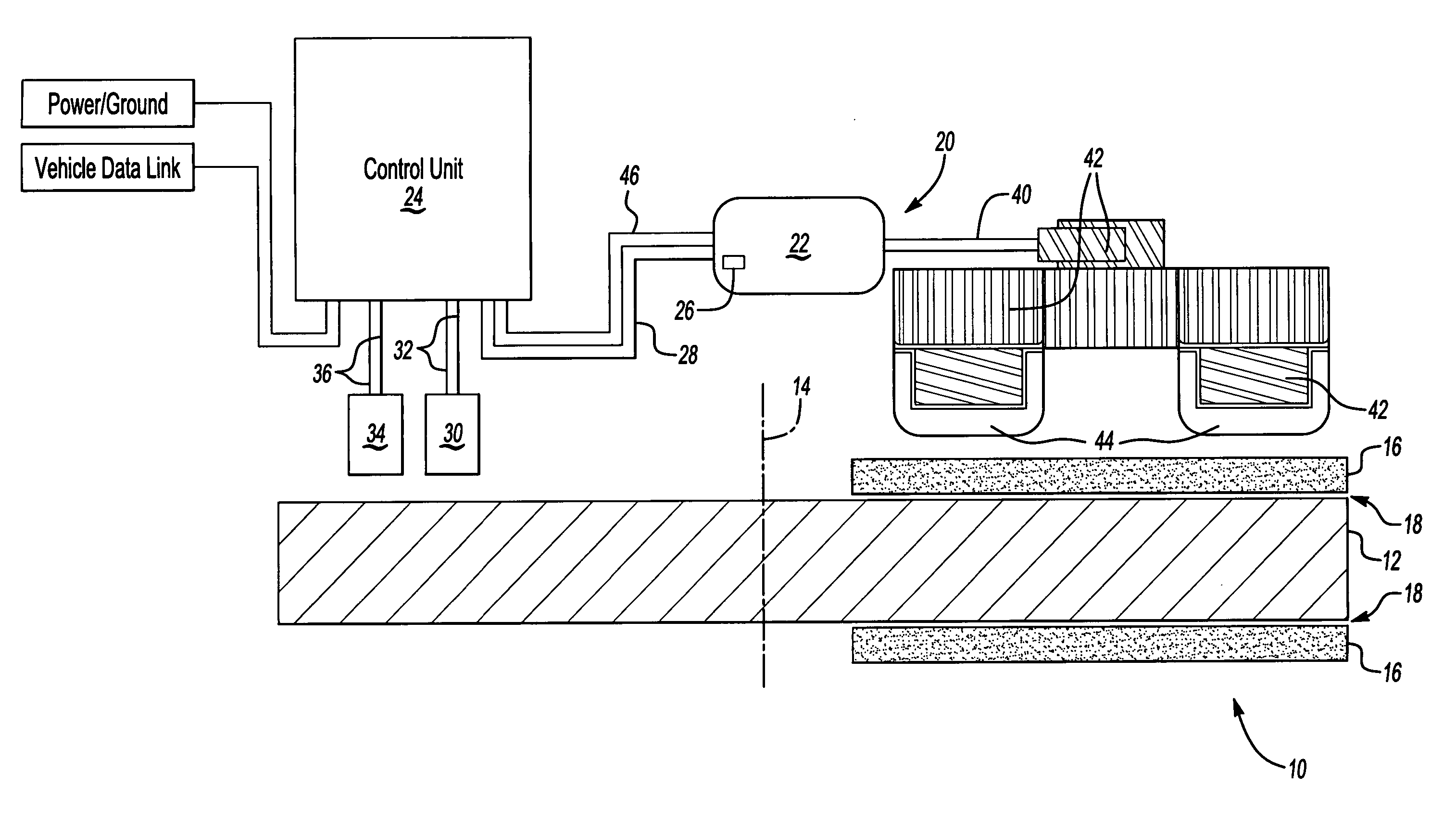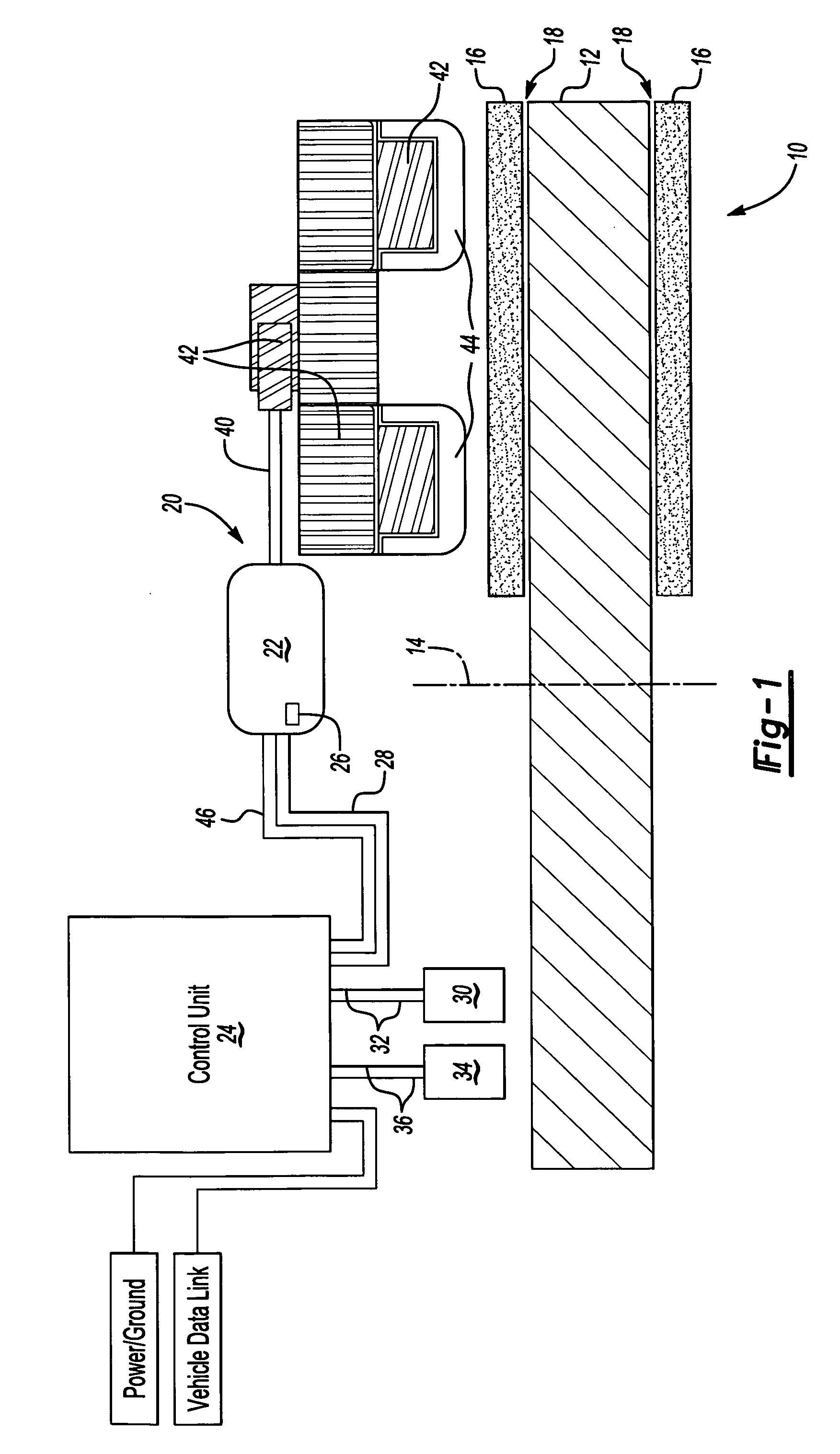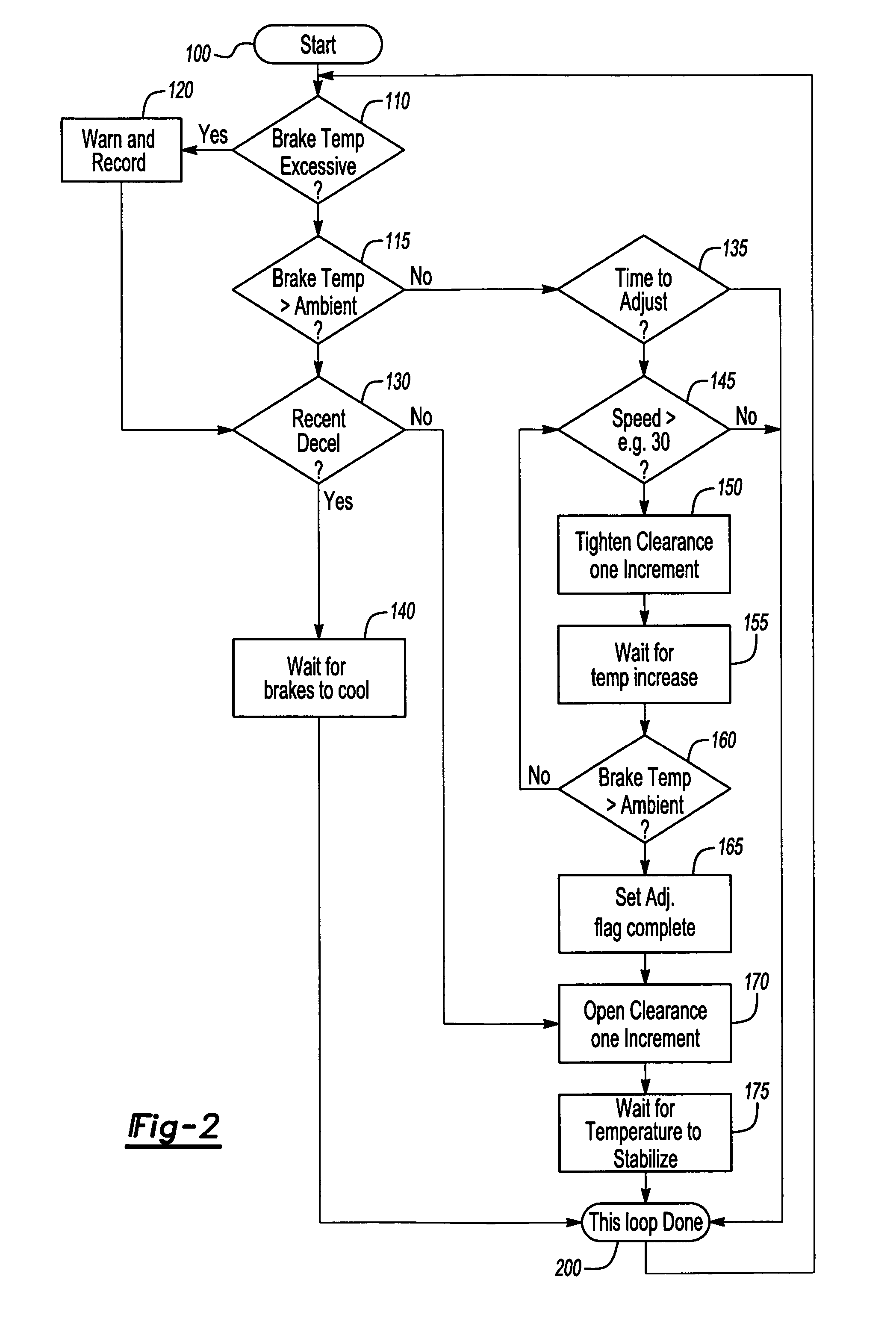Temperature based clearance control for vehicle brake
- Summary
- Abstract
- Description
- Claims
- Application Information
AI Technical Summary
Benefits of technology
Problems solved by technology
Method used
Image
Examples
Embodiment Construction
[0010] As shown in FIG. 1, a vehicle brake 10 includes a rotor 12 that rotates about an axis 14. Brake pads 16 are mounted to a non-rotating vehicle structure (not shown), and are spaced by a clearance shown generally at 18 from the rotor 12 when the vehicle brake 10 is not applied.
[0011] An adjustment mechanism 20 that operates according to the subject invention is used to optimize the clearance 18 to accommodate both pad wear and brake drag. While the vehicle brake 10 shown in FIG. 1 comprises a disc brake, it should be understood that the adjustment mechanism 20 and method of operating the adjustment mechanism 20 could also be used with other types of vehicle brakes.
[0012] The adjustment mechanism 20 includes an electric motor 22 that is operated by a control unit or controller 24. The controller 24 includes a power / ground connection interface and a vehicle data link, as indicated in FIG. 1. The electric motor includes a position sensor 26 that monitors motor position as known....
PUM
 Login to View More
Login to View More Abstract
Description
Claims
Application Information
 Login to View More
Login to View More - R&D
- Intellectual Property
- Life Sciences
- Materials
- Tech Scout
- Unparalleled Data Quality
- Higher Quality Content
- 60% Fewer Hallucinations
Browse by: Latest US Patents, China's latest patents, Technical Efficacy Thesaurus, Application Domain, Technology Topic, Popular Technical Reports.
© 2025 PatSnap. All rights reserved.Legal|Privacy policy|Modern Slavery Act Transparency Statement|Sitemap|About US| Contact US: help@patsnap.com



